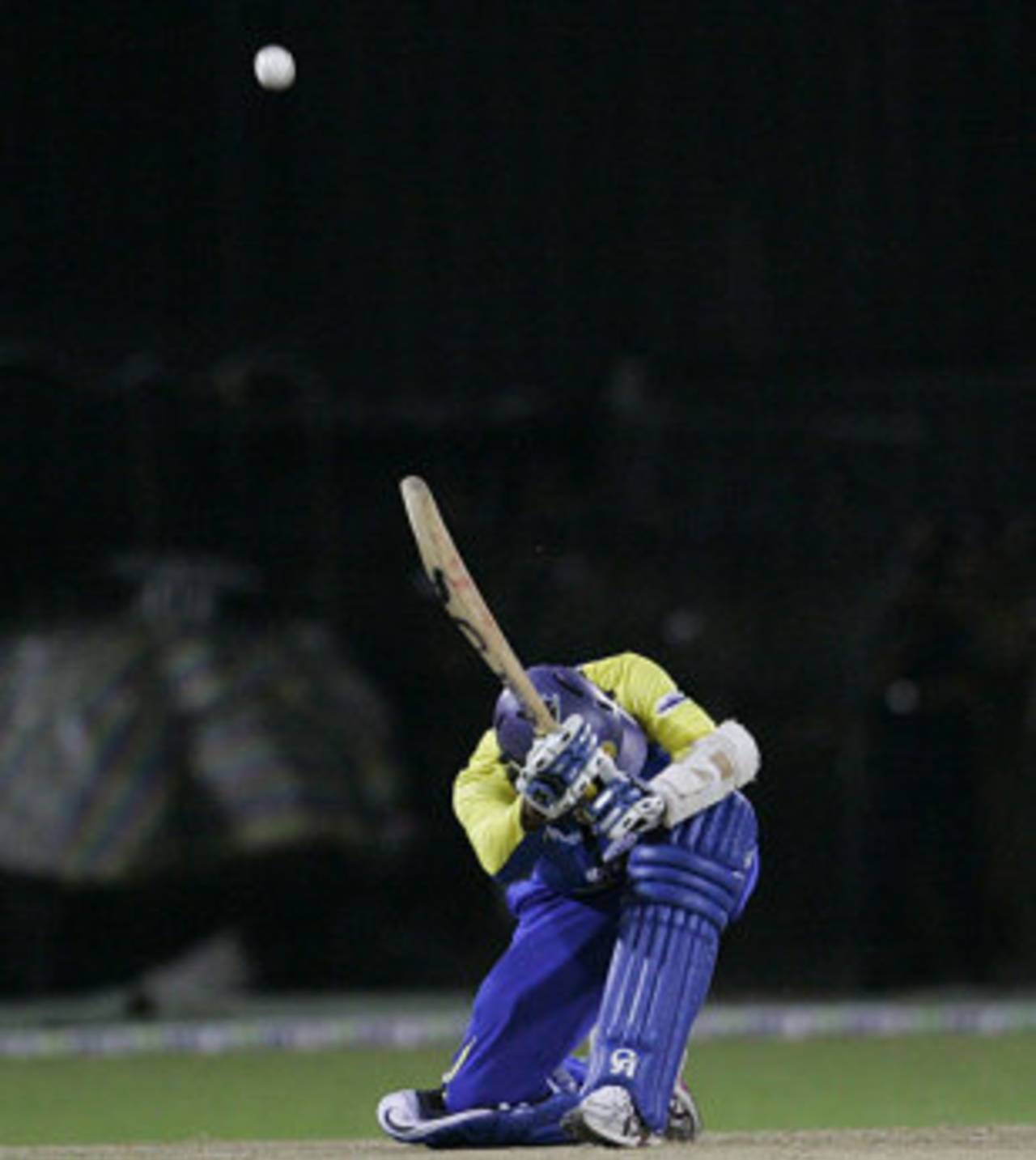The rise of Twenty20 over the past few years has heralded many changes for the game, both good and bad. Cricket's coffers are brimming once again, the game seems more attractive to the non-cricketing layman, and support groups for bowlers have expanded exponentially since the likes of Gayle and Pietersen began thrashing them around like unwanted stepchildren.
There have also been new shots. New fandangled methods of causing those tortured members of the ball-delivering fraternity to join hands in circles across the world to chant uplifting phrases in unison and stick pins into the shoulders of voodoo dolls shaped like Virender Sehwag.
One stroke in particular has captured the imagination of batting sadists worldwide. It's easy enough to describe. Batsman gets low to the ground, sticks his bat out, sends ball sailing high over hapless wicketkeeper to the unprotected boundary. You know, that shot. Pinning down a name for this stroke, however, is not so easy.
It was called the dilscoop at first, named after Mr TM Dilshan, who brought the thing to worldwide notice. But is it fair to name a shot after a batsman simply because he was the first to play it? It seems the answer is yes. The historically enlightened among you might know that it isn't the first time a stroke has been named for its inventor. Lord Herbert Forwarddefence of Soft Handshire downright revolutionised the sport when one Saturday morning he got a large stride in and dead-batted a length delivery safely to the ground. Before then cricket had been a bat-flailing, stump-shattering mess.
But now the tale of the newly christened dilscoop takes a dramatic turn. When Brendon McCullum started playing his own version of the stroke, it was dubbed the scoop'n'roll.
I'm sorry, is this a cricket shot or just good ice cream-serving technique? I can't figure it out because that name is so darn stupid. The McScoop is hardly any better. Last time I checked, those were going for 60 cents down at my local fast food joint.
But more than all of that, it is sheer folly to alter the name of the stroke depending on which batsman plays it. No one calls it the Tendulcut when Sachin plays over point. Or the drink'n'drive when Andrew Symonds hits down the ground. That's just silly. The name of the shot should remain the same regardless of the batsman playing the stroke.
However, there is one exception to this rule, and that is, of course, when one Kieron Pollard is at the batting crease. Here, instead of trying to figure out which cricket shot was just used to brutally violate the bowler at the other end, viewers are probably better off immediately finding shelter in a nearby bunker from aerial projectiles. Pollard cares so little for the "even contest between bat and ball" that it's even supposed that the real reason planes were grounded recently was that several Pollard maximums were making their way across Europe at the time.
So, when all things are said and done about this audacious ramp to the finest of all boundaries, I hope I've settled the question of its official name. Apart from the odd occasion when a certain West Indian gent is molesting his way through an opposing attack, this shot should always be referred to as the dilscoop. No need for cricket journalists to bumble their way through their pieces using long, unwieldy phrases like "funny-looking shot over the keeper's head". No need for draconian editors to change the term dilscoop to something more respectable when their writers use the word in their articles (I'm looking at you, Cricinfo editorial team). Just call it the dilscoop and leave it at that.
Andrew Fernando is a student at Auckland University. He blogs at www.cricketordeath.com

